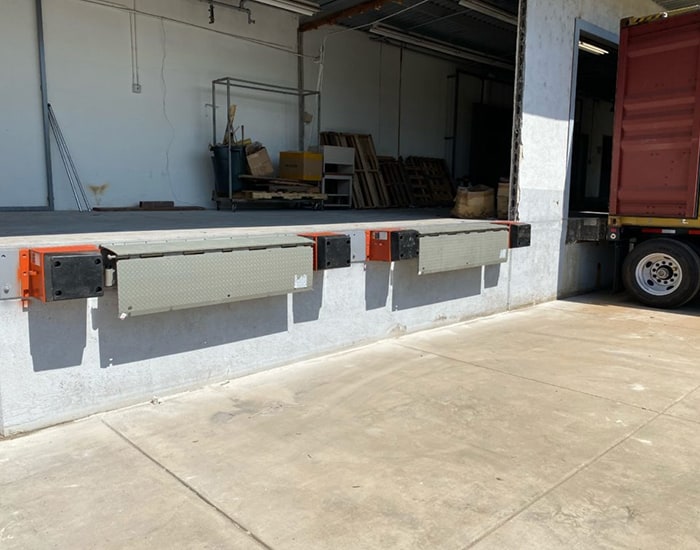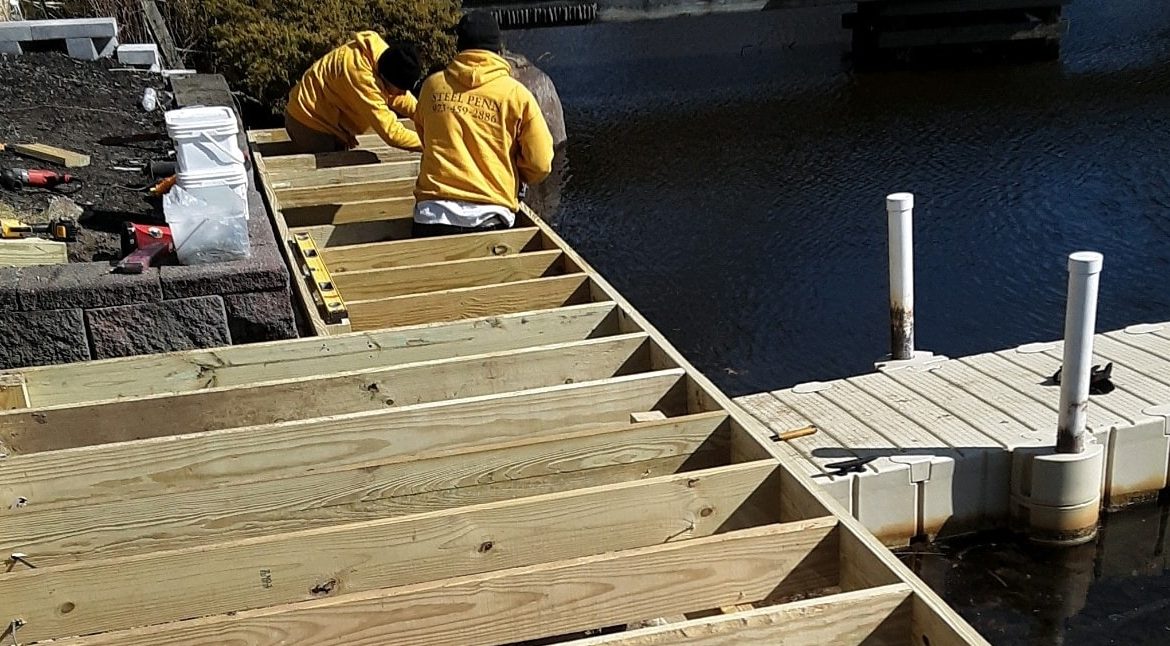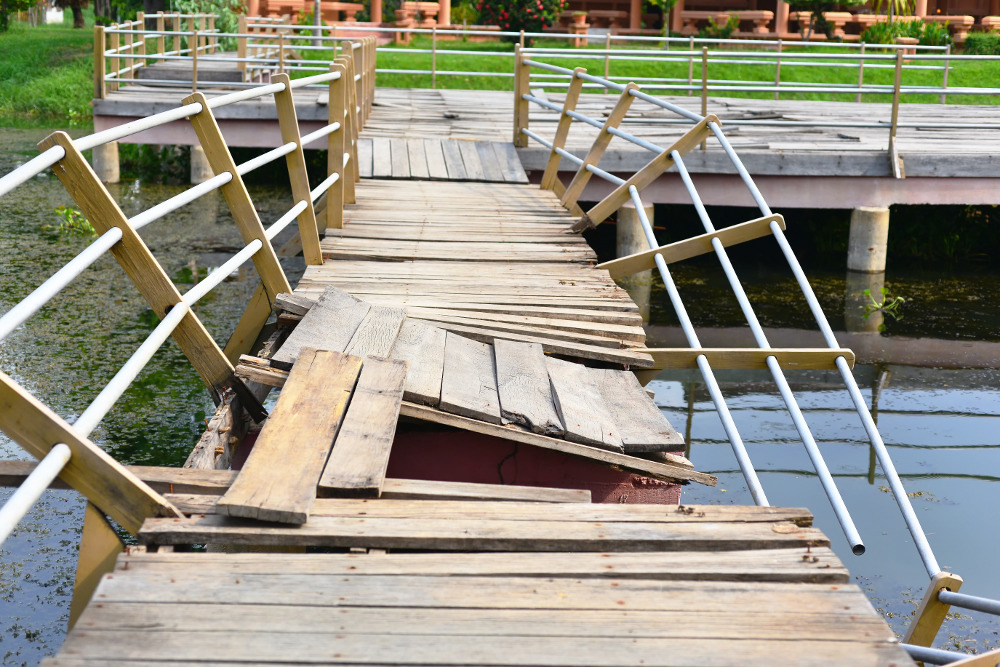Recognizing the Prices Associated With Dock Repairs
Recognizing the Prices Associated With Dock Repairs
Blog Article
Reliable Dock Repair Work Techniques: Making Sure Structural Honesty
Ensuring the architectural stability of anchors with effective repair service techniques is extremely important for the durability and safety and security of aquatic facilities. Consequently, selecting the right repair service products, such as composite products and corrosion-resistant alloys, is crucial for durability.
Evaluating Dock Damage
Analyzing dock damage is an important first action in making sure the architectural integrity and safety of any kind of docking center. Secret facets to check out consist of the dock's foundation, pilings, outdoor decking, and hardware (Dock Repairs).
Architectural designers or qualified inspectors normally execute these analyses utilizing specialized strategies and tools. Undersea evaluations could employ sonar tools or from another location ran cars (ROVs) to discover immersed damage. Over water, visual assessments are complemented by utilizing dampness meters and other diagnostic tools to discover underlying concerns not quickly noticeable to the naked eye.

Finding Repair Service Products
Choosing the proper repair work materials is a critical step in the dock reconstruction process, one that directly affects the longevity and performance of the repaired structure. Material selection should be driven by factors such as ecological conditions, load-bearing needs, and compatibility with existing dock parts. Wood is a typical option for anchors due to its natural strength and aesthetic allure. Choosing the right type of timber, such as pressure-treated lumber or normally rot-resistant types like cedar or teak wood, is important to endure aquatic environments.
In enhancement to timber, composite products are increasingly prominent due to their toughness and low maintenance requirements. Compounds, commonly made from a mix of plastic and timber fibers, use excellent resistance to rot, insects, and UV damages. For steel docks, picking corrosion-resistant alloys such as galvanized steel or marine-grade light weight aluminum is important to prevent rust and make certain architectural integrity in saline water conditions.
Epoxy materials and marine-grade sealants are essential for fixing splits and sealing joints, providing a water resistant obstacle and boosting the dock's general stamina. By thoroughly choosing high-grade materials, dock repairs can achieve durable outcomes, therefore protecting versus future destruction and making sure safe, reliable use.
Structural Support Methods
Efficient architectural reinforcement methods are critical in making sure the security and durability of dock fixings. One basic technique involves the usage of steel or composite support bars (rebar) within concrete structures. Rebar provides added tensile stamina, stopping splits and dispersing tons a lot more equally. This approach is especially effective for docks exposed to hefty tons or harsh environmental problems.
Another vital strategy is the application of fiber-reinforced polymers (FRP) These products supply high strength-to-weight ratios and excellent resistance to corrosion, making them optimal for enhancing wood or concrete docks. FRP can be applied in sheets or strips and adhered with epoxy materials to boost architectural integrity.
Supporting and anchoring systems also play a crucial duty in structural support. Cross-bracing, utilizing steel or wooden beams, can combat lateral pressures, decreasing guiding and motion. Securing systems, such as helical piers or driven stacks, provide a secure foundation by moving tons to much deeper, a lot more stable dirt layers.
Lastly, the assimilation of load-distribution plates can assist disperse weight much more equally across the dock's surface, alleviating localized anxiety points. These methods jointly make sure that anchors stay risk-free and robust, with the ability of withstanding the roughness of their operational atmosphere.
Advanced Fixing Techniques

Another advanced technique includes undersea welding, which permits for repair work to be conducted without the need to dewater the area. This approach is particularly useful for addressing architectural problems in submerged dock parts, ensuring very little disruption to procedures. Improved welding strategies, paired with robotic systems, provide precision and dependability, consequently prolonging the lifespan of the dock.
In addition, cathodic defense systems are carried out to avoid rust in metallic dock frameworks. By utilizing sacrificial anodes or impressed existing systems, these methods efficiently mitigate the electrochemical procedures that cause material damage.
Last informative post but not least, advanced surveillance innovations, such as structural wellness tracking (SHM) systems, provide real-time information on the condition of dock frameworks. These systems allow proactive upkeep and timely treatments, ultimately ensuring the long-lasting structural stability of the dock.
Maintenance and Avoidance
Maintenance and avoidance are essential ideas that underpin the longevity and safety of dock frameworks. Routine inspections are extremely important, enabling early discovery of deterioration, potential weak points, and ecological impacts. An aggressive method, entailing routine look for rust, rot, and architectural shifts, mitigates expensive repairs and extends the dock's functional life.
Safety nets ought to consist of using protective coverings to steel elements to defend against rust and utilizing cured wood to withstand degeneration. Additionally, guaranteeing proper drainage and air flow can protect against water accumulation, which is a typical root cause of structural deterioration. Including quality materials and sticking to manufacturer standards throughout construction and repair service phases likewise play crucial functions in boosting resilience.

Educating workers in dock maintenance best techniques makes sure constant application of safety nets. Leveraging technical developments, such as drones for assessments and sensors for real-time monitoring, can additionally improve maintenance initiatives. By prioritizing maintenance and avoidance, dock owners can guarantee structural integrity, functional security, and affordable administration over the dock's life-span.
Verdict
In verdict, maintaining the structural stability of marine centers demands comprehensive dock repair work methods. Advanced fixing strategies, coupled with regular maintenance methods, make certain the dock remains functional and secure under varied ecological problems.
Guaranteeing the structural stability of anchors via reliable repair work methods is vital for the long life and safety and security of marine facilities.Selecting the suitable repair service products is a crucial action in the dock remediation process, one that directly influences the longevity my explanation and performance of the fixed framework.Efficient architectural support techniques are critical in guaranteeing the stability and durability of dock repairs. By prioritizing maintenance and prevention, dock proprietors can make certain architectural honesty, functional security, and economical monitoring over the dock's lifespan.
In conclusion, preserving the structural stability of aquatic centers demands thorough dock repair service techniques.
Report this page